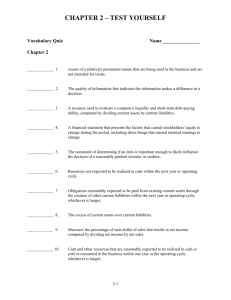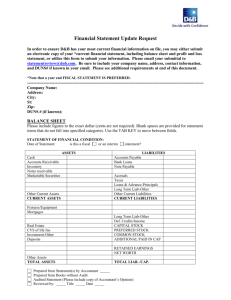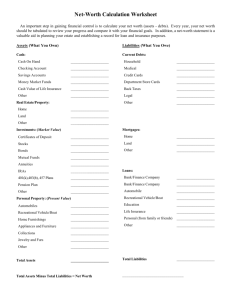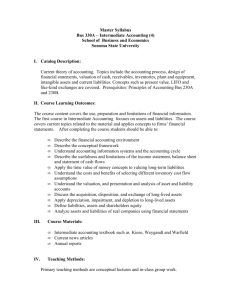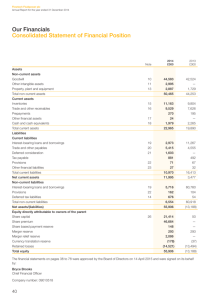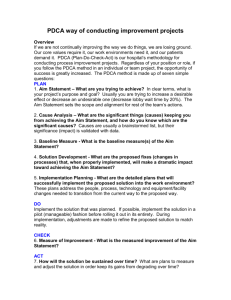Creating_Sustainable___Adaptable_Businesses
advertisement
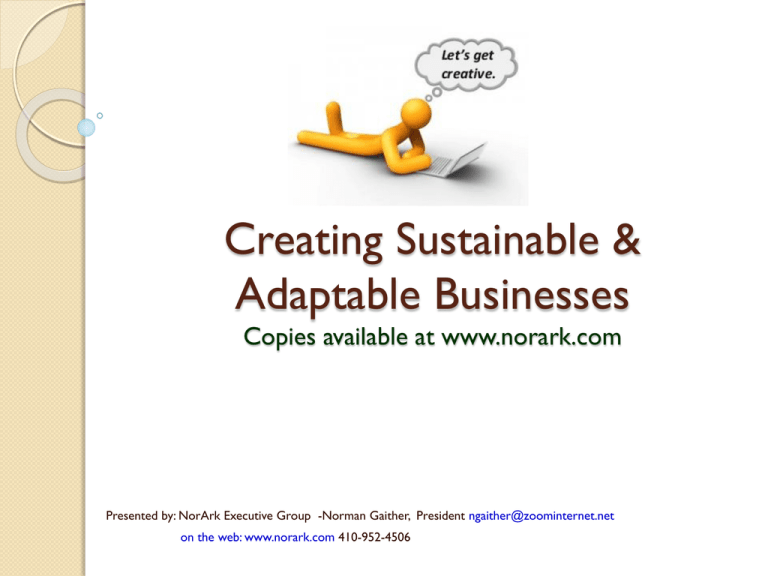
Creating Sustainable & Adaptable Businesses Copies available at www.norark.com Presented by: NorArk Executive Group -Norman Gaither, President ngaither@zoominternet.net on the web: www.norark.com 410-952-4506 Must Have(s) Good business Accounting (either internally or externally) – accounting provides the metrics required for a sustainable business. ◦ Reports you can understand and act upon. Marketing expense: Does it yield target clients? Check every line item to assure it is essential to adding value to your business. P & L (Profit and Loss) –Are you offsetting expenses with revenues? Statement of Cash Flows –Are you flowing cash for operations? Balance Sheet –What is the net value of the business (Assets, Liabilities, Owner’s (and/or Shareholder’s)Equity? Owner’s Equity =Assets –Liabilities (What you got minus what you owe). LEAN organization ◦ Remove all non-value added activities. Clutter and disorganized activities are not things the client wishes to pay for. (Consider 5-S [Sort, Set in Place, Shine, Standardize, Sustain]) Remove redundant and unnecessary steps in operations and concentrate on how to deliver your services and products on-time at top quality. Look at your constraints. Flow out what processes currently exist and remove the activities that waste time and resources. Create systems that are error-proofed. Be pro-active first. (Planning first before reacting). PDCA, DMAIC (Define, Measure, Analyze, Improve, & Control) –support verbally, but make sure you write it into policy. Must Have(s) Professional Presence ◦ In your Marketing ◦ In your preparation ◦ In your public persona Adaptable Strategies ◦ Sometimes a single path (focus) works; however, sometimes alternative paths are required when things outside your control are unstable –consider alternative paths for: Economic instability Regulatory uncertainty Unknown budget constraints on your customer’s purchases. Emerging competition Adapting Assume that the way you do business each new year will be different. ◦ Talk to your clients – then see if your strategy reflects their needs. ◦ Look at clothing trends – Don’t go drastic; go gradual. ◦ Look at music trends –top hits in your target demographic may reflect how your customer is changing. ◦ Look at the news – What’s pressing in the world is often reflected in your customer’s buying habits. If you see a slow down –start looking at ways to mitigate your cost. If an economic surge is imminent -meet with your team and discuss how to handle additional opportunities. Do your homework and research. Check and double check your submittals and your pricing structures. Do you know your burden cost? Training Knowledge sells ! ◦ Every person in your organization should understand the value of a “smiling voice.” ◦ Every person should be able to present your company in a few descriptive words, “We provide…..” ◦ Take the time to train your managers as leaders. People leave people….create an organization of trust. ◦ Every employee, at every level, needs to fully understand your product and/or services. Create Balance in your Life and you will create balance in your business. If you are in personal turmoil, it will be reflected in your business decisions, whether you try to suppress it or not –it shows up. The (4) pieces to a balance in business and life: ◦ ◦ ◦ ◦ Professionalism Knowledge Pleasure Generosity





